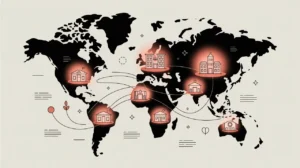Importance of Six Conditions of Systems Change
Six conditions of systems change provide a structured way to understand and influence the complex factors that shape how systems function. They highlight that meaningful change requires more than programs or policies, it involves shifting structures, relationships, and mindsets. For practitioners, funders, and policymakers, this framework can help identify leverage points for transformation and clarifies why surface-level interventions often fail to produce lasting impact.
Definition and Features
The six conditions of systems change framework, developed by FSG and popularized through Stanford Social Innovation Review, identifies three layers of systemic conditions:
- Structural Conditions
- Policies – laws, regulations, and formal rules.
- Practices – institutional routines, activities, and behaviors.
- Resource Flows – how money, people, information, and infrastructure are allocated.
- Relational Conditions
- Relationships & Connections – networks, partnerships, and trust among actors.
- Power Dynamics – distribution of decision-making authority and influence.
- Transformational Conditions
- Mental Models – cultural norms, narratives, and deeply held beliefs.
How this Works in Practice
In practice, the six conditions framework is applied to initiatives seeking systemic transformation. For example, education reform efforts may start by shifting classroom practices but need complementary changes in funding flows, policy mandates, teacher networks, and public perceptions of learning. Climate initiatives may target resource flows (investment in renewables) while also working to shift mental models about consumption and responsibility. The framework is used by funders to design strategies, by nonprofits to identify leverage points, and by coalitions to prioritize interventions.
Implications for Social Innovation
The six conditions of systems change reorient social innovation from isolated projects to system-wide transformation. They help innovators see beyond immediate outputs to the deeper drivers of persistence or change within systems. By addressing not only policies and practices but also relationships, power, and mental models, social innovators can design strategies that endure and scale. For funders, this framework provides a roadmap for supporting interventions that build momentum across multiple layers.







